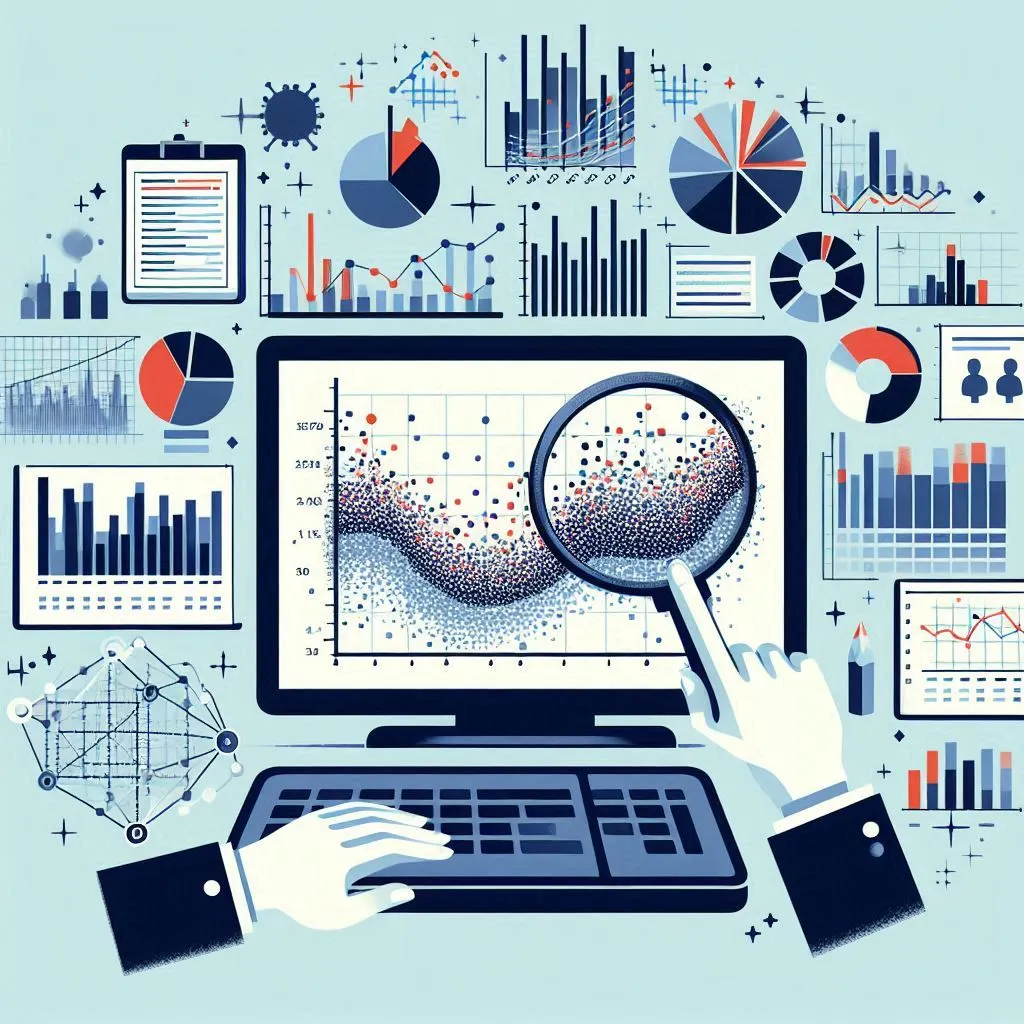Claim Your Discount Today
Start your semester strong with a 20% discount on all statistics homework help at www.statisticshomeworkhelper.com ! 🎓 Our team of expert statisticians provides accurate solutions, clear explanations, and timely delivery to help you excel in your assignments.
We Accept
- 1. Statistical Reports on Online News Reports and Fluctuations
- 2. Accuracy of AI-Based Tools in the Field of Statistics
- 3. Social Media Madness Among College Students
- 4. Impact of Social Media on School Students
- 5. Correlation Between Grades and Study Habits
- 6. What is the Most Effective Time of Day to Study?
- 7. Various Statistical Models for Business Forecasting
- 8. Financial Models in Business
- 9. Is the Effort of Privatization Fruitful or Disastrous for the Economy?
- 10. Statistical Analysis of the Expenditure of the Federal Government
- 11. On-Field and Off-Field Data Analysis in Sports
- 12. Impact of Social Media on Corporate Sales and Employee Performance
- 13. Bank Advantages on Various Corporates
- 14. Differences in the Habits of Male and Female College Students for Social Media Use
- 15. Factors Responsible for Designing Methods to Estimate Different Components
- 16. A Statistical Evaluation of Various Brands Supported by Star Athletes
- 17. Why There is Always a High Demand for Movie Stars in the Advertising Industry
- 18. Income vs. Explanation Analysis for Social Research
- 19. Why Farmers Need Good Agricultural Loan Schemes
- 20. Predictive Healthcare Analysis with Machine Learning
- 21. An Analysis of Online Education during the COVID-19 Pandemic
- 22. A Statistical Analysis of Various Types of Injuries Suffered by Sportsmen
- 23. An Analysis of Doping Tests in the Sports Field
- 24. A Statistical Survey of the Type of Music Enjoyed by Students
- 25. Over-Population is a Global Crisis
- 26. A Statistical Survey of Student Malpractice During Exams
- 27. A Survey of the Commonly Occurring Road Accidents in Suburban Areas
- Conclusion:
Statistics homework often come with a range of challenging yet fascinating topics. To help students tackle this homework effectively, this guide will provide a comprehensive approach to solving statistical problems using various project ideas. These topics cover a wide array of real-world applications, making statistics both engaging and practical. Below are some notable project ideas and how you can approach similar homework:
1. Statistical Reports on Online News Reports and Fluctuations
Approach:
- Data Collection: Gather data from various online news sources over a specific period.
- Data Cleaning: Remove any irrelevant or duplicate information.
- Analysis: Use time series analysis to identify patterns or fluctuations in news reporting.
- Visualization: Create graphs and charts to represent the data trends.

2. Accuracy of AI-Based Tools in the Field of Statistics
Approach:
- Literature Review: Research existing AI tools used in statistics.
- Data Collection: Collect data sets to test the AI tools.
- Comparison: Compare the AI-generated results with traditional statistical methods.
- Evaluation: Assess the accuracy and reliability of the AI tools.
3. Social Media Madness Among College Students
Approach:
- Survey Design: Create a survey to gather data on social media usage among college students.
- Data Analysis: Use descriptive statistics to summarize the survey results.
- Correlation Analysis: Investigate the relationship between social media usage and various factors such as academic performance, mental health, and social life.
- Report Writing: Present your findings with supporting evidence.
4. Impact of Social Media on School Students
Approach:
- Hypothesis Formulation: Develop hypotheses about social media's impact on school students.
- Data Collection: Use surveys, interviews, or existing data.
- Statistical Tests: Apply statistical tests (e.g., t-tests, chi-square tests) to test the hypotheses.
- Conclusion: Draw conclusions based on the statistical analysis.
5. Correlation Between Grades and Study Habits
Approach:
- Data Gathering: Collect data on students' grades and their study habits.
- Correlation Analysis: Use Pearson or Spearman correlation to explore the relationship between grades and study habits.
- Interpretation: Analyze the strength and direction of the correlation.
- Recommendations: Provide recommendations based on your findings.
6. What is the Most Effective Time of Day to Study?
Approach:
- Survey Design: Survey students about their study habits and preferred study times.
- Performance Metrics: Collect data on students' academic performance.
- Statistical Analysis: Use regression analysis to determine if study time affects performance.
- Results Presentation: Present your findings in a clear and concise manner.
7. Various Statistical Models for Business Forecasting
Approach:
- Model Selection: Identify and select appropriate statistical models for business forecasting (e.g., ARIMA, exponential smoothing).
- Data Collection: Gather historical business data.
- Model Implementation: Apply the selected models to forecast future business trends.
- Model Comparison: Compare the accuracy of different models and choose the best one.
8. Financial Models in Business
Approach:
- Model Identification: Identify key financial models used in business (e.g., CAPM, DCF).
- Data Analysis: Use real financial data to apply these models.
- Evaluation: Assess the performance and reliability of each model.
- Reporting: Summarize your findings and implications for business decisions.
9. Is the Effort of Privatization Fruitful or Disastrous for the Economy?
Approach:
- Literature Review: Research the impact of privatization on different economies.
- Data Collection: Collect economic data from countries that have undergone privatization.
- Comparative Analysis: Compare economic indicators before and after privatization.Conclusion: Draw conclusions based on statistical evidence.
10. Statistical Analysis of the Expenditure of the Federal Government
Approach:
- Data Collection: Obtain data on federal government expenditures.
- Categorization: Categorize the expenditures into different sectors.
- Trend Analysis: Use time series analysis to identify trends and patterns.
- Policy Implications: Discuss the implications of your findings on government policy.
11. On-Field and Off-Field Data Analysis in Sports
Approach:
- Data Collection: Gather on-field (e.g., player performance) and off-field (e.g., financial) data.
- Comparative Analysis: Compare and contrast the two types of data.
- Statistical Tests: Apply appropriate statistical tests to analyze the data.
- Conclusion: Summarize the impact of both types of data on sports outcomes.
12. Impact of Social Media on Corporate Sales and Employee Performance
Approach:
- Data Gathering: Collect data on corporate sales and employee performance.
- Correlation Analysis: Explore the relationship between social media presence and these metrics.
- Regression Analysis: Use regression models to predict the impact of social media.
- Reporting: Present your findings with actionable insights.
13. Bank Advantages on Various Corporates
Approach:
- Data Collection: Collect data on corporate financing from banks.
- Comparative Analysis: Compare the advantages received by different corporates.
- Statistical Tests: Use t-tests or ANOVA to analyze the differences.
- Conclusion: Summarize the findings and their implications for corporate finance.
14. Differences in the Habits of Male and Female College Students for Social Media Use
Approach:
- Survey Design: Create a survey to gather data on social media habits.
- Descriptive Statistics: Summarize the data using descriptive statistics.
- Comparative Analysis: Use chi-square tests to explore differences between male and female students.
- Interpretation: Discuss the implications of these differences.
15. Factors Responsible for Designing Methods to Estimate Different Components
Approach:
- Literature Review: Research the factors involved in estimation methods.
- Data Collection: Collect relevant data.
- Factor Analysis: Use factor analysis to identify key factors.
- Conclusion: Summarize the key factors and their impact on estimation methods.
16. A Statistical Evaluation of Various Brands Supported by Star Athletes
Approach:
- Data Collection: Gather data on brands and their association with star athletes.
- Brand Analysis: Use statistical methods to evaluate the impact of athlete endorsements on brand performance.
- Comparative Analysis: Compare the performance of different brands.
- Conclusion: Summarize the effectiveness of athlete endorsements.
17. Why There is Always a High Demand for Movie Stars in the Advertising Industry
Approach:
- Data Collection: Collect data on advertising campaigns involving movie stars.
- Impact Analysis: Analyze the impact of these campaigns on consumer behavior.
- Statistical Tests: Use hypothesis testing to determine the significance of the impact.
- Conclusion: Discuss the reasons for the high demand for movie stars.
18. Income vs. Explanation Analysis for Social Research
Approach:
- Data Gathering: Collect data on income and various social factors.
- Correlation Analysis: Explore the relationship between income and these factors.
- Regression Analysis: Use regression models to predict social outcomes based on income.
- Conclusion: Summarize your findings and their implications for social research.
19. Why Farmers Need Good Agricultural Loan Schemes
Approach:
- Literature Review: Research the importance of agricultural loans.
- Data Collection: Collect data on agricultural productivity and loan schemes.
- Impact Analysis: Analyze the impact of loan schemes on productivity.
- Conclusion: Discuss the need for effective loan schemes.
20. Predictive Healthcare Analysis with Machine Learning
Approach:
- Data Collection: Gather healthcare data.
- Model Selection: Choose appropriate machine learning models for prediction.
- Model Training: Train the models using the collected data.
- Evaluation: Evaluate the accuracy and reliability of the models.
- Reporting: Present your findings with potential applications in healthcare.
21. An Analysis of Online Education during the COVID-19 Pandemic
Approach:
- Data Collection: Collect data on online education metrics during the pandemic.
- Comparative Analysis: Compare these metrics with pre-pandemic data.
- Impact Analysis: Analyze the impact of the pandemic on education.
- Conclusion: Discuss the implications for the future of education.
22. A Statistical Analysis of Various Types of Injuries Suffered by Sportsmen
Approach:
- Data Collection: Gather data on sports injuries.
- Categorization: Categorize the injuries by type, severity, and sport.
- Statistical Tests: Use chi-square tests to analyze the frequency and distribution of injuries.
- Conclusion: Summarize the findings and implications for sports safety.
23. An Analysis of Doping Tests in the Sports Field
Approach:
- Data Collection: Collect data on doping tests and results.
- Trend Analysis: Use time series analysis to identify trends in doping cases.
- Impact Analysis: Analyze the impact of doping on sports performance.
- Conclusion: Discuss the effectiveness of doping regulations.
24. A Statistical Survey of the Type of Music Enjoyed by Students
Approach:
- Survey Design: Create a survey to gather data on music preferences.
- Descriptive Statistics: Summarize the data using descriptive statistics.
- Correlation Analysis: Explore the relationship between music preferences and demographic factors.
- Conclusion: Summarize the findings and their implications for the music industry.
25. Over-Population is a Global Crisis
Approach:
- Data Collection: Collect global population data.
- Trend Analysis: Use statistical methods to analyze population trends.
- Conclusion: Discuss the implications of over-population and potential solutions.
26. A Statistical Survey of Student Malpractice During Exams
Approach:
- Survey Design: Create a survey to gather data on exam malpractice.
- Descriptive Statistics: Summarize the data using descriptive statistics.
- Comparative Analysis: Compare malpractice rates across different demographics.
- Conclusion: Discuss the findings and their implications for academic integrity.
27. A Survey of the Commonly Occurring Road Accidents in Suburban Areas
Approach:
- Data Collection: Gather data on road accidents in suburban areas.
- Categorization: Categorize the accidents by type, cause, and location.
- Statistical Tests: Use statistical tests to analyze the frequency and distribution of accidents.
- Conclusion: Summarize the findings and suggest safety measures.
Conclusion:
By approaching your statistics homework with a clear methodology, you can effectively tackle a wide range of topics. These project ideas not only enhance your statistical skills but also provide valuable insights into various real-world applications. Remember to stay organized, use appropriate statistical methods, and present your findings clearly. Happy studying!









